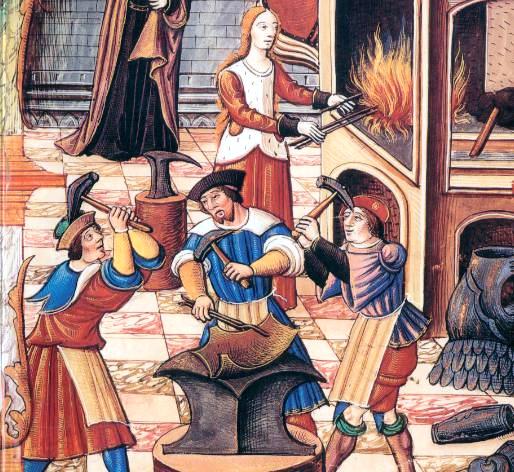St Dunstan, as the story goes,
Once pull'd the devil by the nose
With red-hot tongs, which made him roar,
That he was heard three miles or more.
I've long wanted to play a blacksmith/fighter who went into battle with a pair of tongs in his off-hand.
Blacksmith
Starting HP: 1d8+4
HP per Level/Rest: 1d8
Maximum Armor: Medium
Attack: 1d6/1d4 Improvising
Hammer and Tongs: If a Blacksmith makes a successful attack with a pair of tongs (1d4 dmg) held in one hand, they can make a STR check to hold their target fast. If the target is held, the Blacksmith receives Advantage nest round on a strike with a hammer (1d6) held in the other hand. They can keep the target held for as many turns as they can pass STR checks.
Tempered: Blacksmiths receive Advantage on saves to avoid damage from fire and heat.
Tinker: With little more than fire and a hammer, a Blacksmith can repair metal equipment, including armor and weapons.
Forge: With appropriate materials, a Blacksmith can create metal equipment, including armor and weapons. This requires an INT check.
1: A masterwork is created, with amenities to be determined by the GM.
Under INT: The piece is successfully made.
Equal to INT: The piece is substandard, and will break when a 1 or 20 is rolled.
Over INT: The attempt fails.
20: The attempt fails and the Blacksmith suffers 1d10 damage.
Leveling Up: Roll to see if Attributes increase. Roll twice for STR or CON.
Blacksmith Starting Equipment
1d6x10 Gold
Hammer (1d6 dmg)
Tongs (1d4 dmg)
Leather Apron and Gloves (as Light Armor)
Crafting Tools (chisels, rasps, hand bellows)
Flint and Tinder
Masterwork Item (roll 1d6):
1. Helmet
2. Shield
3. Breastplate
4. Gauntlets
5. Sword
6. Chain and Lock

Comments
Post a Comment